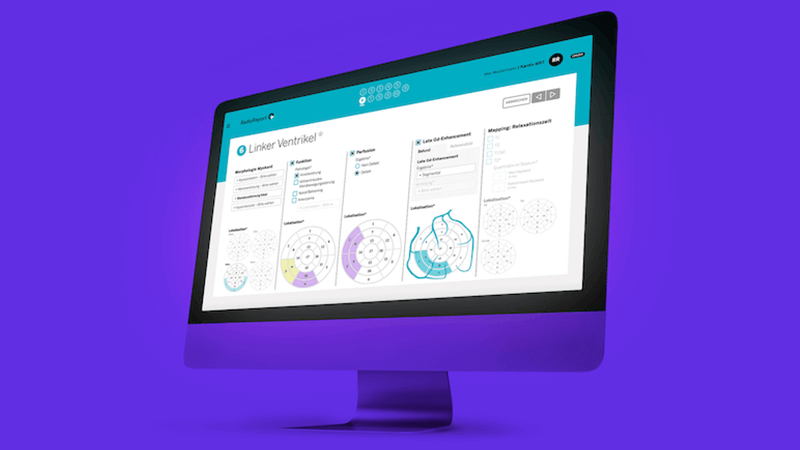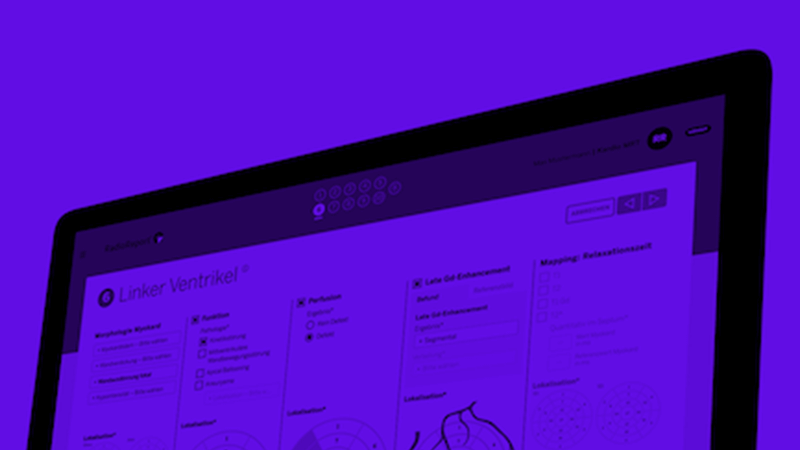Guided Reporting –
Rethinking structured Reporting
Key to the development of Guided Reporting is the idea of digitally mapping the thinking of experienced radiologists. The resulting software provides a structured framework that helps guide users through the analysis process, offering flexibility while ensuring key considerations are addressed.

Definitely, the growing number of scans and increasing complexity of cases is a real challenge for radiologists.
A Message from Jan Wintzer, Co-founder
The Weaknesses Of Current Reporting
Rising Imaging Demands, Stretched Radiology Teams
- Modern CT and MRI scanners produce more images than ever, yet the radiology workforce has not kept pace, straining existing staff.1,2
- Rising pressure is driving high burnout rates, especially in private practice, worsening workforce challenges and underscoring the need for effective solutions.3–5
Time Lost in Reporting
- Radiologists face reduced productivity due to time-consuming manual processes.6
- Unclear radiology findings and ambiguities result in lengthy consultations and additional imaging.7,8
Unclear Referrals and Inconsistent Reporting Fuel Redundant Imaging
- Inefficient communication between referring physicians and radiologists plays a crucial role in overutilization. Unclear referral information, ambiguous clinical indications, and a lack of standardized reporting practices contribute to misinterpretations and redundant imaging.9

How Guided Reporting Can Address Current Weaknesses in Radiology
- Guided reporting provides a structured reporting framework supporting radiologists by streamlining high-volume workflows and reducing cognitive load.
- Intuitive selection tools and pre-defined fields eliminate repetitive tasks and reduce time spent generating reports.
- Standardized, comprehensive output ensures clarity and consistency, improving communication and reducing unnecessary follow-ups.
- Smith-Bindman R, Kwan ML, Marlow EC, et al. Trends in Use of Medical Imaging in US Health Care Systems and in Ontario, Canada, 2000-2016. JAMA. 2019;322(9):843–856.
- Rosenkrantz AB, Hughes DR, Duszak R Jr. The U.S. Radiologist Workforce: An Analysis of Temporal and Geographic Variation by Using Large National Datasets. Radiology. 2016;279(1):175–84.
- Hudnall, CE. Burnout Fueling Workforce Woes. American College of Radiology. Available at: https://www.acr.org/Clinical-Resources/Publications-and-Research/ACR-Bulletin/Burnout-Fueling-Workforce-Woes. (Accessed March 2025).
- Fawzy NA, Tahir MJ, Saeed A, et al. Incidence and factors associated with burnout in radiologists: A systematic review. Eur J Radiol Open. 2023;11:100530.
- Parikh JR, Moore AV, Mead L, et al. Prevalence of Burnout of Radiologists in Private Practice. J Am Coll Radiol. 2023;20(7):712–718.
- Dhanoa D, Dhesi TS, Burton KR, Nicolaou S, Liang T. The evolving role of the radiologist: the Vancouver workload utilization evaluation study. J Am Coll Radiol. 2013;10(10):764–9.
- Kwee RM, Toxopeus R, Kwee TC. Imaging overuse in the emergency department: The view of radiologists and emergency physicians. Eur J Radiol. 2024;176:111536.
- Lysdahl KB, Hofmann BM. What causes increasing and unnecessary use of radiological investigations? A survey of radiologists’ perceptions. BMC Health Serv Res. 2009;9:155.
-
Kwee RM, Toxopeus R, Kwee TC. Imaging overuse in the emergency department: The view of radiologists and emergency physicians. Eur J Radiol. 2024;176:111536.
Further topics

RadioReport® Automatic AI revolutionizes reporting
We have mapped the thought processes of experienced radiologists into RadioReport® Automatic AI. Starting with anatomy instead of pathology, the software guides you like a virtual interview to the final report.

